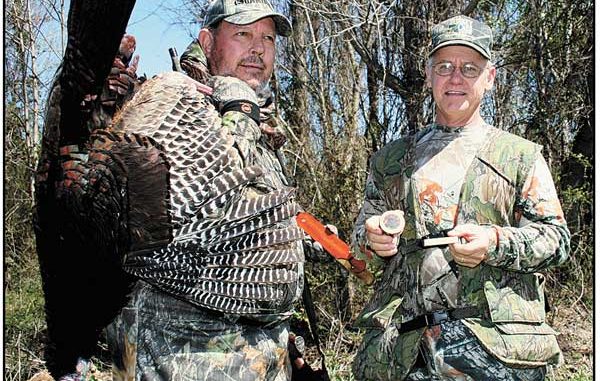
Need help getting your gobbler? Lowcountry pros share their fool-proof secrets.
The world of turkey hunting does not contain many sure things. Longbeards are wary, wily and wild. The only pattern they consistently exhibit is to have no pattern in how they respond to a hunter’s calls, setups and strategies.
But one thing’s for sure. When you get a gang of gobbler gurus in a place that happens to be in a turkey-rich environment, you’ll get more good tips and tactics in a couple of days than in a lifetime of hunting by yourself.
That was the case last spring at Bang’s Paradise Valley Hunting Club in Ehrhardt. A Lowcountry hunting lodge, Bang’s has more than 10,000 acres of prime turkey hunting land in numerous different tracts. Several top hunters and guides gather there annually and openly share a lifetime of turkey-hunting experiences.
Present were call-makers Steve Reeves of Supreme Turkey Calls and Sam Pope of Chattahoochee Game Calls, plus guides John Coit of Florence and Johnny Garris of Columbia. Bang and Tom Collins were hosts for the event.
Among the most popular topics of conversation were calling, selection of the right setup to work a gobbler, knowledge of the terrain and also how to overcome the lack of knowledge when hunting a new area. Of course, guns, equipment and woodsmanship were also covered.
As it typically does, the conversation began with calls.
“Everyone should have a favorite turkey call, their ‘go to’ call,” Reeves said. “I didn’t find any that really fit the bill for me when I started, so I began making my own calls, and it developed into a business. One key to consistent success is to have a quality call, preferably two or three, and be very proficient with them.
“I hear different theories from hunters about how important calling is to turkey hunting success,” Reeves said. “Some say it’s not all that important as long as it’s not bad calling. I don’t agree with that. That’s more of an excuse to not put the practice time in to become proficient.
“Certainly, overall success is about doing a lot of things right, but I believe calling is crucial, and excellent calling can make up for shortcomings in other areas. There’s no excuse to not do everything else you can to be successful. But working on calling ability is certainly at the leading edge of successful turkey hunting.”
Pope, who hails from Abbeville, Ala., has been a turkey hunter most all of his life, and at the age of “Fifty-Something” he’s learned more than most in the turkey calling business. Pope certainly knows turkey hunting; he called longbearded gobblers into range the first three mornings at Bang’s last season — and seven in the eight days he guided.
“This is a new turkey-hunting experience for me, here in the Lowcountry,” Pope said. “But turkeys are basically turkeys, and there are several things I think are keys to success on longbeards that are pretty universal.
“One of the top priorities for any hunter is having good woodsmanship skills, combined with an ample dose of patience,” he said. “Also, good calling skills are important. However, you don’t have to be a world-class caller to lure in and kill a gobbler. But you do have to be proficient to consistently get gobblers in close.”
Pope said woodsmanship is an area where most turkey hunters can quickly improve their odds of success.
“Movement, even small movements of the foot or leg, is one of the more serious drawbacks to success for most hunters for turkeys,” Pope said. “Turkeys can see extremely well, and they are extremely wary and nervous. If they see movement that is not natural, they don’t usually wait around to see what it was. They just seem to automatically consider it a danger signal, and they’re gone in an instant.
“Movement through the woods by the hunter is also a key component to success,” he said. “Of course, you should walk quietly and avoid stomping through the woods cracking twigs and crushing leaves. Sometime,s noises in dry woods are unavoidable, but keep it to a minimum. Hunters do have to move around at times to locate turkeys or to change setups that are not working, but keep that activity as low key as possible.”
Pope also said his preferred way to begin a hunt in the early morning is to let the woods and gobblers start the day naturally, as much as possible.
“When hunting new places, I often won’t be able to roost a bird in the evening before a hunt,” Pope said. “So, when I get to the woods in the morning, I like to hear a gobble or two and then quickly formulate a plan of action, based on where the bird is located. I prefer to let the turkeys just begin gobbling on their own. If they don’t, then I’ll begin with owl or crow calls to try to get a gobble. If that doesn’t work, I start using the turkey calls.”
Pope’s personal arsenal of calls is extensive, but he said hunters don’t have to have a huge assortment of calls to be successful.
“I’m a call-maker, so I’m really into lots of calls,” Pope said. “For most hunters, it’s best to have two or three calls they are competent with and use them with the basic clucks, purrs and yelps. Those few calls will kill plenty of gobblers.”
Timing and patience are virtues every turkey hunter should work on, according to Garris. He said many hunters try to push things too quickly and mess up a hunt before it really gets cranked up.
“Turkeys are on their own schedule, not on ours,” he said. “Just when you think you’ve got them figured out, they change up on you. But one thing is for sure, when a gobbler wants to gobble, he’ll gobble. And when he doesn’t, he won’t. Like everyone, I have theories of what makes a good gobbling morning, but then they’ll do something that contradicts it.
“However, I’ve learned that if you have confidence in the situation in terms of where you are hunting and your calling ability, you can still enjoy a very successful hunt.
“I believe when a longbeard gobbles to you, he’s essentially saying he’s coming,” he said. “But what he doesn’t tell you is how long you’ll have to wait.”
Garris said that one of his best tactics, especially when hunting a new area, is to wait as long as he can, then wait a little while longer.
“Many times I’ve forced myself to sit and be patient, still and observant,” Garris said. “Most times I’ll eventually see the turkey. Sometimes they’ll sneak all the way in with no more gobbles, and those quiet ones make the wait worthwhile. Plus, I’ve heard a common story repeated countless times. A hunter hears a gobble and waits a while and sees no turkey. Then they make a move on the bird and when they set up and call again, he gobbles from the spot they just left. Be patient and give them some time.”
While the consensus is certainly that good calling is a key, these pros also know that it’s the whole package that generates consistent success. As Pope summarized, the successful turkey hunter is one who works at all the pieces of the puzzle to be able to adapt to whatever the gobbler does.

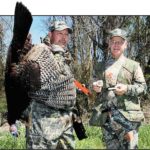
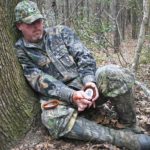
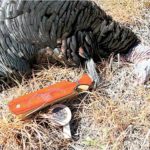
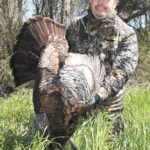
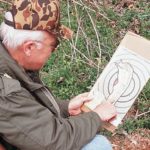



Be the first to comment